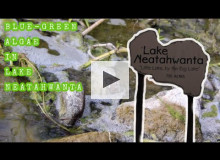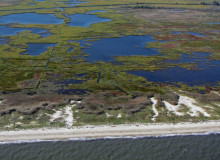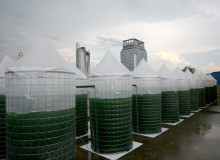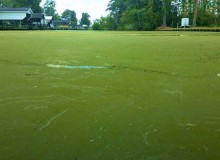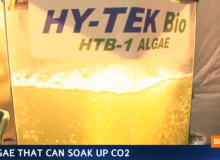algae
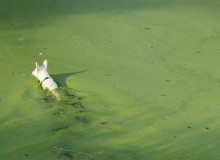
A pup swims in a pond of blooming algae. Could he be at risk? (Ildar Sagdejev/Wikimedia Commons)
George Washington University
Climate Hits Home | Reoccurring algae blooms threaten life both in and out of the water. How will we break the news to our dogs?
SUNY ESF
I grew up next to Lake Neatahwanta in Fulton, N.Y. This lake has been experiencing issues with toxic blue-green algae since 1988, and has not been swimmable since.

The winter sky over the Gulf of Mexico seen from the air as a tugboat services offshore wells. (Todd Kihle/NOAA/NMFS/SEFSC/Galveston Lab)
The George Washington University
Seated at the mouth of the Mississippi River, the Gulf of Mexico receives everything that flows through the river — which includes more than just water.
University of Delaware
The health of the Delaware Bay is in question. Human activities, even those at the far reaches of a watershed, can deeply effect a bay's ecosystem. So how can we prevent more damage and work on restoration?
Northwestern University
Maddie Burakoff of Medill reports that at eco-institute Kalu Yala, researchers seek out environmental solutions in the midst of one of the most biodiverse regions in the world, but grapple with sustaining their own progress.
University of Wisconsin-Madison
Microalgae could play a critical role in feeding a rapidly expanding global population.
Northwestern University
A new study led by a Tufts University professor predicts that the U.S. Northeast and Southeast will be most affected by the overgrowth of harmful algal blooms.
George Washington University
Algae has the potential to change the future as fuel for cars, planes and ourselves.
This week on Bloomberg West, Planet Forward's Frank Sesno explores the how algae can be used to consume harmful greenhouse gases and produce clean energy.
An overview of HY-TEK Bio's new clean energy technology that allows the use of fossil fuels as clean sources of energy.

